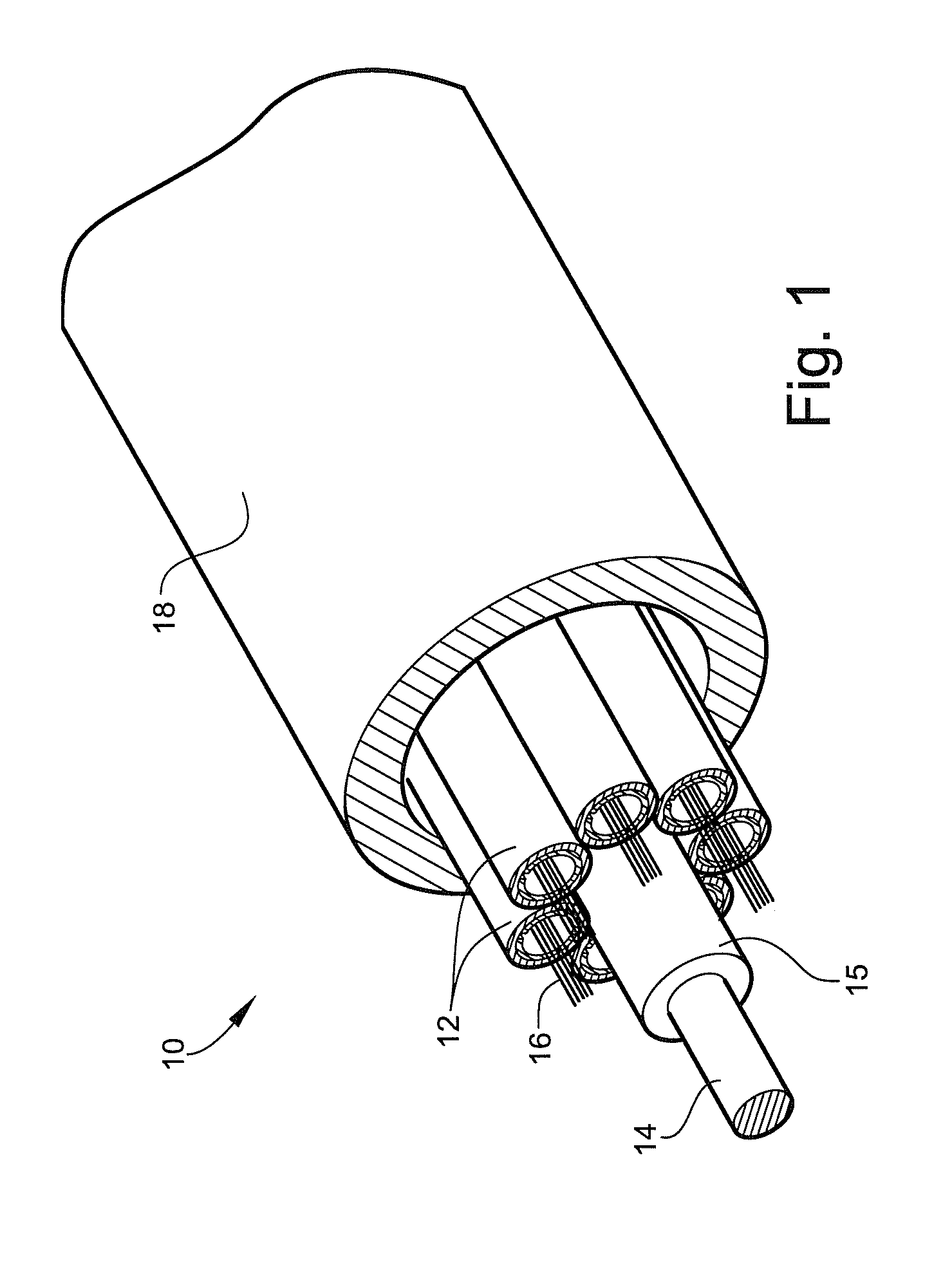Method of forming an optical fiber buffer tube
a buffer tube and optical fiber technology, applied in the field of optical fiber cable construction, can solve the problems of ineconomic feasibility, shrinkage of the buffer tube, and increase of the excess fiber length (efl), and achieve the effect of less radial control
- Summary
- Abstract
- Description
- Claims
- Application Information
AI Technical Summary
Benefits of technology
Problems solved by technology
Method used
Image
Examples
Embodiment Construction
[0019]The present invention will now be described more fully hereinafter with reference to the accompanying drawings in which exemplary embodiments of the invention are shown. However, the invention may be embodied in many different forms and should not be construed as limited to the representative embodiments set forth herein. The exemplary embodiments are provided so that this disclosure will be both thorough and complete, and will fully convey the scope of the invention and enable one of ordinary skill in the art to make, use and practice the invention.
[0020]Referring to FIG. 1, a non-limiting example of a portion of an optical fiber cable including a buffer tube processed according to a method disclosed herein is illustrated generally at reference numeral 10. The cable 10 includes a plurality of buffer tubes 12 axially stranded about a central strength member 14, separated therefrom by a coating 15 that buffers contact between the buffer tubes 12 and the central strength member ...
PUM
| Property | Measurement | Unit |
|---|---|---|
| outer diameter | aaaaa | aaaaa |
| length | aaaaa | aaaaa |
| length | aaaaa | aaaaa |
Abstract
Description
Claims
Application Information
 Login to View More
Login to View More - R&D
- Intellectual Property
- Life Sciences
- Materials
- Tech Scout
- Unparalleled Data Quality
- Higher Quality Content
- 60% Fewer Hallucinations
Browse by: Latest US Patents, China's latest patents, Technical Efficacy Thesaurus, Application Domain, Technology Topic, Popular Technical Reports.
© 2025 PatSnap. All rights reserved.Legal|Privacy policy|Modern Slavery Act Transparency Statement|Sitemap|About US| Contact US: help@patsnap.com



